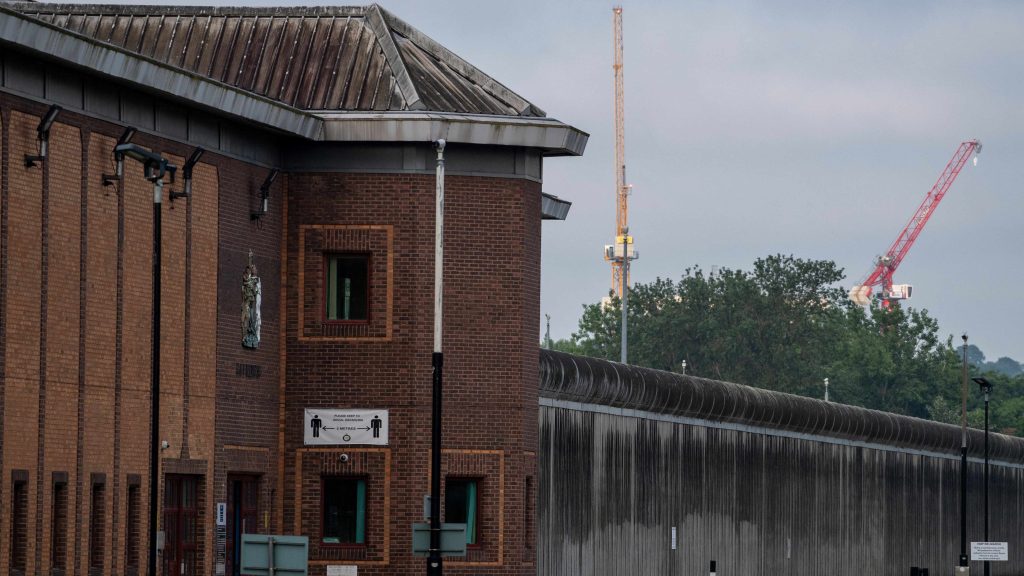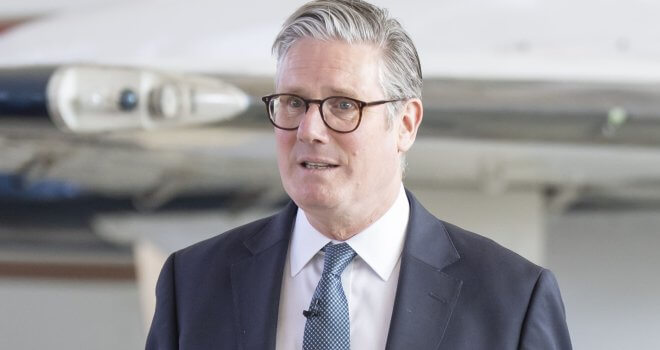UK’s Overflowing Prisons Present PM Starmer With Early Crisis

The scale of the challenge facing Prime Minister Keir Starmer’s new government is writ large in Britain’s prisons, which are within weeks of being too full to accept new inmates, leaving the government with unpalatable and costly choices.
Britain has western Europe’s highest rate of incarceration, according to the World Prison Brief database and faces a crisis after a new building programme failed to keep track with tougher sentencing laws that have fuelled a growing prison population.
Already many prisons are housing two inmates in cells built for one, and emergency measures triggered by the previous Conservative government mean some offenders have been released early and court cases delayed to avoid new arrivals.
The head of the body representing prison governors has warned that unless a solution can be found, offenders will soon have to be held in police cells – constraining officers and disrupting the wider judicial system.
Labour leader Starmer has described the state of Britain’s prisons as a “monumental failure” of the last government, but like other challenges – from sewage in rivers to strikes at the National Health Service – that stance may only hold for so long.
He also has little financial room to manoeuvre. According to the Institute for Government (IfG) think tank, spending on prisons is set to fall by 5.9% each year relative to demand over the coming years.
Tom Wheatley, president of the Prison Governors Association, said the new government had no time to waste.
“I think they can (act quickly enough), but only just. It’s going to be touch and go,” he told Reuters.
“We’re nearing the line on what can be safely accommodated, even in overcrowded conditions.”
HIGH IMPRISONMENT RATES
As of July 5, England and Wales had 87,453 prisoners – up from 86,035 a year earlier and within a whisker of what prison governors see as a maximum capacity of 88,864.
That equates to around 144 prisoners per 100,000 in the population. Imprisonment rates are around 25% lower in France, Spain and Italy and less than half in Germany and the Netherlands. The United States, however, has a far higher rate at 531 prisoners per 100,000.
Options to tackle overcrowding include releasing more offenders with electronic tags or giving people suspended sentences, meaning they would only be jailed if they were to reoffend again within a certain timeframe.
Starmer has promised to get to grips with the problem but warned it would take time. “We can’t fix it overnight. Therefore, it is impossible to say we will stop the early release of prisoners,” he said in his first press conference after his party won a landslide victory in last week’s election.
Starmer was previously the chief prosecutor for England and Wales and his longer-term thinking may be detected by his choice of new prisons minister: businessman James Timpson, whose shoe-repair and key-cutting firm employs ex-offenders and who is known for his belief in rehabilitation.
Britain’s Ministry of Justice said a third of former prisoners were proven to have committed another offence within 12 months of release, rising to more than half of those who had served less than a year behind bars.
Any attempt to improve that would take time, and money.
TALKING TOUGH ON CRIME
It is a crisis that has had a slow and steady build-up. Britain’s parties have long fought election campaigns on tackling crime with harsher sentences, tapping into the demands of some of the country’s newspapers and voters’ fears.
Starmer’s Labour was no different, promising “tough new penalties for offenders”.
And that has had an impact on prisons.
Government data shows that average sentence length, excluding life sentences, increased from 14.5 to 20.9 months between 2012 and 2023.
In 2020 and 2022 the Conservative government also moved to make those convicted of more serious crimes serve at least two thirds rather than half their sentences behind bars.
As a result the IfG says the prison population has doubled over the last 30 years, even as crime rates have fallen substantially. The population is now forecast to balloon to more than 100,000 by 2026.
There is little new accommodation. The building of three new prisons has been thwarted by planning rejections and the closure of prisons built in the 19th century has been delayed.
Wheatley, who has run several jails, said the prison estate in England and Wales was only built to house about 79,000 people, not the nearly 88,000 people it has now. He said switching to more tagging may require legislation, but he expects a government decision soon.
The IfG said the previous Conservative government’s programme to build 20,000 prison spaces by the mid 2020s was significantly behind schedule, with fewer than 6,000 built. It was only likely to hit 10,000 by the end of 2025.
Before the election, Labour pledged to deliver the remaining 14,000 new prison places.
However, early intervention will be needed before prison building programmes are completed.
“They are going to have to take some further emergency steps in the short term to reduce demand on prisons,” said Cassia Rowland, a senior researcher at the IfG.
(Reporting by Elizabeth Piper and David Milliken; editing by Kate Holton and Keith Weir)




